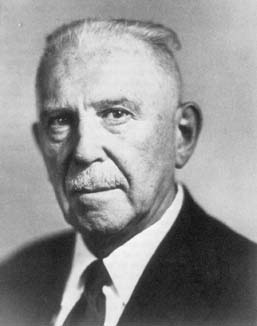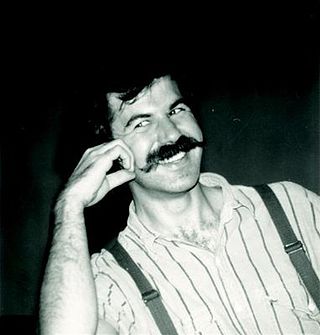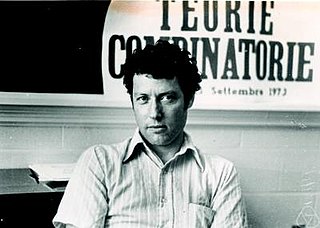Related Research Articles

Stephen Smale is an American mathematician, known for his research in topology, dynamical systems and mathematical economics. He was awarded the Fields Medal in 1966 and spent more than three decades on the mathematics faculty of the University of California, Berkeley, where he currently is Professor Emeritus, with research interests in algorithms, numerical analysis and global analysis.

John Willard Milnor is an American mathematician known for his work in differential topology, algebraic K-theory and low-dimensional holomorphic dynamical systems. Milnor is a distinguished professor at Stony Brook University and one of the five mathematicians to have won the Fields Medal, the Wolf Prize, and the Abel Prize.

Oscar Zariski was a Russian-born American mathematician and one of the most influential algebraic geometers of the 20th century.

Solomon Lefschetz was a Russian-born American mathematician who did fundamental work on algebraic topology, its applications to algebraic geometry, and the theory of non-linear ordinary differential equations.

Norman Earl Steenrod was an American mathematician most widely known for his contributions to the field of algebraic topology.

Harold Calvin Marston Morse was an American mathematician best known for his work on the calculus of variations in the large, a subject where he introduced the technique of differential topology now known as Morse theory. The Morse–Palais lemma, one of the key results in Morse theory, is named after him, as is the Thue–Morse sequence, an infinite binary sequence with many applications.

In geometry and combinatorics, an arrangement of hyperplanes is an arrangement of a finite set A of hyperplanes in a linear, affine, or projective space S. Questions about a hyperplane arrangement A generally concern geometrical, topological, or other properties of the complement, M(A), which is the set that remains when the hyperplanes are removed from the whole space. One may ask how these properties are related to the arrangement and its intersection semilattice. The intersection semilattice of A, written L(A), is the set of all subspaces that are obtained by intersecting some of the hyperplanes; among these subspaces are S itself, all the individual hyperplanes, all intersections of pairs of hyperplanes, etc. (excluding, in the affine case, the empty set). These intersection subspaces of A are also called the flats ofA. The intersection semilattice L(A) is partially ordered by reverse inclusion.

Ralph Hartzler Fox was an American mathematician. As a professor at Princeton University, he taught and advised many of the contributors to the Golden Age of differential topology, and he played an important role in the modernization and main-streaming of knot theory.

Nathan Jacobson was an American mathematician.
In mathematics, a Lefschetz pencil is a construction in algebraic geometry considered by Solomon Lefschetz, used to analyse the algebraic topology of an algebraic variety V.
In mathematics, specifically in algebraic geometry and algebraic topology, the Lefschetz hyperplane theorem is a precise statement of certain relations between the shape of an algebraic variety and the shape of its subvarieties. More precisely, the theorem says that for a variety X embedded in projective space and a hyperplane section Y, the homology, cohomology, and homotopy groups of X determine those of Y. A result of this kind was first stated by Solomon Lefschetz for homology groups of complex algebraic varieties. Similar results have since been found for homotopy groups, in positive characteristic, and in other homology and cohomology theories.

John Colin Stillwell is an Australian mathematician on the faculties of the University of San Francisco and Monash University.
In mathematics, a supersolvable arrangement is a hyperplane arrangement which has a maximal flag with only modular elements. Equivalently, the intersection semilattice of the arrangement is a supersolvable lattice, in the sense of Richard P. Stanley. As shown by Hiroaki Terao, a complex hyperplane arrangement is supersolvable if and only if its complement is fiber-type.
Claudio Procesi is an Italian mathematician, known for works in algebra and representation theory.
Nolan Russell Wallach is a mathematician known for work in the representation theory of reductive algebraic groups. He is the author of the 2-volume treatise Real Reductive Groups.
Hiroaki Terao is a Japanese mathematician, known as, with Peter Orlik and Louis Solomon, a pioneer of the theory of arrangements of hyperplanes. He was awarded a Mathematical Society of Japan Algebra Prize in 2010.

Francis Bonahon is a French mathematician, specializing in low-dimensional topology.

Kyōji Saitō is a Japanese mathematician, specializing in algebraic geometry and complex analytic geometry.
Bernard Shiffman is an American mathematician, specializing in complex geometry and analysis of complex manifolds.

Thomas Henry Brylawski was an American mathematician and professor at the University of North Carolina, Chapel Hill. He worked primarily in matroid theory.
References
- ↑ biographical information from American Men and Women of Science, Thomson Gale 2004
- 1 2 Conference in honour of Peter Orlik, Fields Institute, August 2008
- ↑ Peter Orlik at the Mathematics Genealogy Project
- ↑ Institute for Advanced Study: A Community of Scholars
- ↑ List of Fellows of the American Mathematical Society